Code
SELECT * FROM [tblStudent$]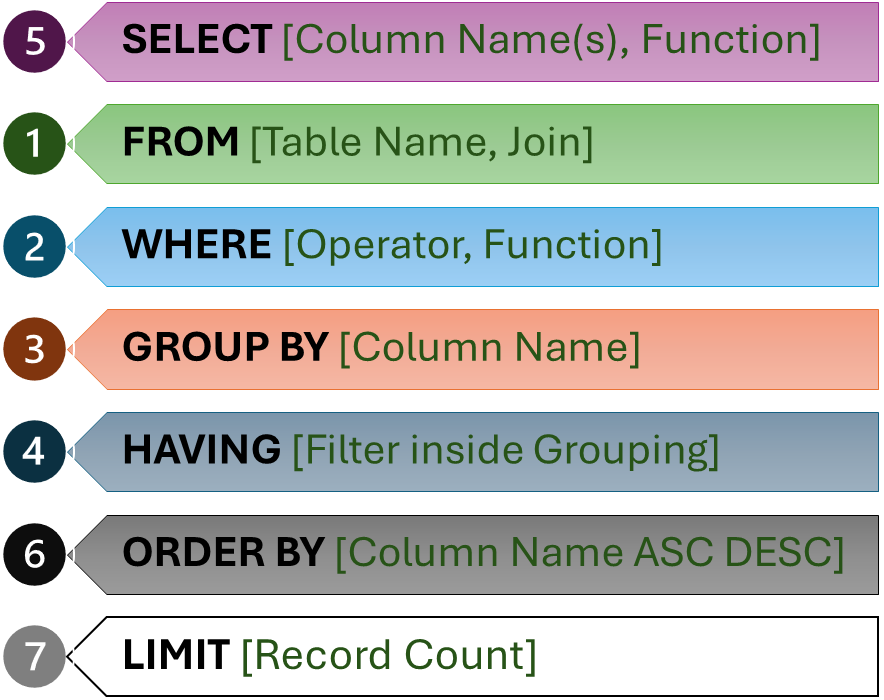
All examples in this chapter are presented using MS Excel
For running the SQL statements in MS Excel, see the previous chapter for Options 1 and 2.
If you select Option 2, check that all cells are blank in the range where outputs will be displayed.
In principle, just copy and paste the SQL statement.
The SQL commands and clauses are not case sensitive; in general, they are written in upper case.
Note that Excel requires SQL query table names to include a $ sign and be enclosed in [].
Here is an example: SELECT * FROM [tblStudent$]
Options 1 and 2 cannot accept multiline SQL statements. Submit the SQL statement in one line.
SELECT * FROM [tblStudent$]SELECT
SELECT * FROM [tblStudent$]
SELECT SName, Gender, Age FROM [tblStudent$]
SELECT SName AS StudentName, Gender, Age FROM [tblStudent$]WHERE
sSQL = "
SELECT SName AS StudentName, Gender, Age
FROM [tblStudent$]
WHERE Age > 16 AND Attendance > 85
"ORDER BY
sSQL = "
SELECT SName AS StudentName, Gender, Age, Attendance
FROM [tblStudent$]
WHERE Age > 16 AND Attendance > 85
ORDER BY Attendance ASC
"SELECT with DISTINCT
sSQL = "
SELECT COUNT(DISTINCT Age)
FROM [tblStudent$]
"
sSQL = "
SELECT DISTINCT ClassID
FROM [tblStudent$]
WHERE Age > 16 AND Attendance > 85
ORDER BY Attendance ASC
"SELECT with Aggregate functionsSQL = "
SELECT COUNT(DISTINCT Age)
FROM [tblStudent$]
"
sSQL = "
SELECT COUNT(Age)
FROM [tblStudent$]
"
sSQL = "
SELECT COUNT(Age) AS N
FROM [tblStudent$]
WHERE Attendance > 85
"
sSQL = "
SELECT COUNT(Age) AS N
FROM [tblStudent$]
WHERE Attendance BETWEEN 85 AND 95
"
sSQL = "
SELECT COUNT(Age) AS N, AVG(Age) as AvgAge
FROM [tblStudent$]
WHERE Attendance BETWEEN 85 AND 95
"
sSQL = "
SELECT MIN(Age) AS Min, MAX(Age) AS Max,
SUM(Age) AS Sum, AVG(Age) AS Avg, COUNT(Age) AS N
FROM [tblStudent$]
ORDER BY N ASC
"GROUP BY
sSQL = "
SELECT Gender, COUNT(DISTINCT ClassID) AS N
FROM [tblStudent$]
WHERE Attendance BETWEEN 85 AND 95
GROUP BY Gender
ORDER BY Gender ASC
"
sSQL = "
SELECT Gender, ClassID, COUNT(DISTINCT ClassID) AS N
FROM [tblStudent$]
WHERE Attendance BETWEEN 85 AND 95
GROUP BY Gender, ClassID
ORDER BY ClassID, Gender ASC
"
sSQL = "
SELECT Gender, COUNT(DISTINCT ClassID) AS N, AVG(Age) AS AvgAge
FROM [tblStudent$]
WHERE Attendance BETWEEN 85 AND 95
GROUP BY Gender
ORDER BY N ASC
"
sSQL = "
SELECT Gender,
COUNT(DISTINCT ClassID) AS N,
MIN(Age) AS Min, MAX(Age) AS Max,
SUM(Age) AS Sum, AVG(Age) AS Avg
FROM [tblStudent$]
WHERE Attendance BETWEEN 85 AND 95
GROUP BY Gender
ORDER BY N ASC
"HAVING
sSQL = "
SELECT Age, COUNT(ClassID) AS N
FROM [tblStudent$]
WHERE Attendance > 85
GROUP BY Age
HAVING N > 1
"
sSQL = "
SELECT Gender, COUNT(ClassID) AS N, AVG(Age) as AvgAge
FROM [tblStudent$]
WHERE Attendance BETWEEN 85 AND 95
GROUP BY Gender
HAVING AvgAge > 16
ORDER BY N ASC
"FROM with JOIN
Read all tables as data.frame
Register the connection with duckdb
Note separate table names for each table
tblClass = read.table(file = "tblClass.txt", sep = "\t", header = TRUE)
tblTeacher = read.table(file = "tblTeacher.txt", sep = "\t", header = TRUE)
tblStudent = read.table(file = "tblStudent.txt", sep = "\t", header = TRUE)
tblMarks = read.table(file = "tblMarks.txt", sep = "\t", header = TRUE)
conn = dbConnect(duckdb())
duckdb_register(conn = conn, name = "tblClass", df = tblClass)
duckdb_register(conn = conn, name = "tblTeacher", df = tblTeacher)
duckdb_register(conn = conn, name = "tblStudent", df = tblStudent)
duckdb_register(conn = conn, name = "tblMarks", df = tblMarks)LEFT JOIN: Everything on the LEFT AND those matches on the RIGHT
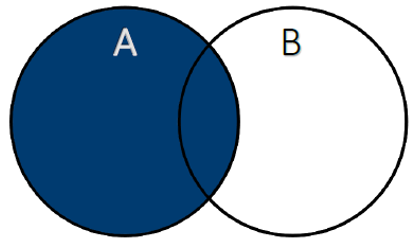
sSQL = "
SELECT *
FROM tblClass
LEFT JOIN [tblTeacher$]
ON [tblClass$].TeacherID = [tblTeacher$].TeacherID
"
sSQL = "
SELECT *
FROM [tblClass$] AS C
LEFT JOIN [tblTeacher$] AS T
ON C.TeacherID = T.TeacherID
"
sSQL = "
SELECT [tblClass$].ClassID, [tblClass$].Subject, [tblClass$].TeacherID
FROM tblClass
LEFT JOIN [tblTeacher$] AS T
ON tblClass.TeacherID = T.TeacherID
"
sSQL = "
SELECT C.ClassID, C.Subject, C.TeacherID
FROM [tblClass$] AS C
LEFT JOIN [tblTeacher$] AS T
ON C.TeacherID = T.TeacherID
"
sSQL = "
SELECT C.ClassID, C.Subject, C.TeacherID,
T.TeacherID, T.TName, T.Experience
FROM [tblClass$] AS C
LEFT JOIN [tblTeacher$] AS T
ON C.TeacherID = T.TeacherID
"
sSQL = "
SELECT T.TeacherID, T.TName, T.Experience,
C.ClassID, C.Subject, C.TeacherID
FROM [tblTeacher$] AS T
LEFT JOIN [tblClass$] AS C
ON T.TeacherID = C.TeacherID
"LEFT JOIN
Anti LEFT JOIN or LEFT JOIN Exclusive
Everything on the LEFT that is NOT on the RIGHT
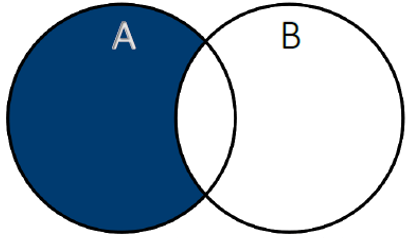
sSQL = "
SELECT T.TeacherID, T.TName, T.Experience,
C.ClassID, C.Subject, C.TeacherID
FROM [tblTeacher$] AS T
LEFT JOIN [tblClass$] AS C
ON T.TeacherID = C.TeacherID
WHERE C.TeacherID IS NULL
"RIGHT JOIN
RIGHT JOIN: Everything on the RIGHT AND those matches on the LEFT

sSQL = "
SELECT C.ClassID, C.Subject,
S.StudentID, S.SName, S.ClassID
FROM [tblClass$] AS C
RIGHT JOIN [tblStudent$] AS S
ON C.ClassID = S.ClassID
ORDER BY S.StudentID
"RIGHT JOIN
Anti RIGHT JOIN or RIGHT JOIN Exclusive
Everything on the RIGHT that is NOT on the LEFT
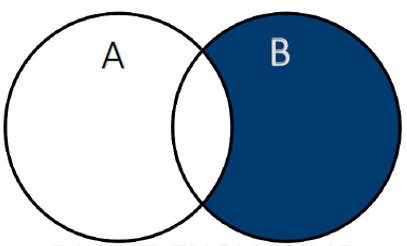
sSQL = "
SELECT C.ClassID, C.Subject,
S.StudentID, S.SName, S.ClassID
FROM [tblClass$] AS C
RIGHT JOIN [tblStudent$] AS S
ON C.ClassID = S.ClassID
WHERE C.ClassID IS NULL
ORDER BY S.StudentID
"INNER JOIN
LEFT AND the RIGHT
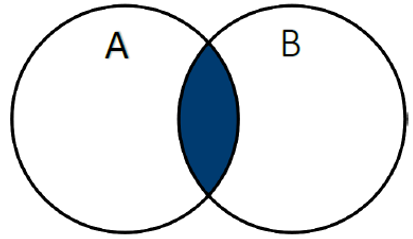
sSQL = "
SELECT S.StudentID, S.SName, S.ClassID,
M.StudentID, M.Marks
FROM [tblStudent$] AS S
INNER JOIN [tblMarks$] AS M
ON S.StudentID = M.StudentID
ORDER BY S.StudentID
"FULL JOIN
FULL JOIN or OUTER JOIN: Everything on the LEFT AND everything on the RIGHT
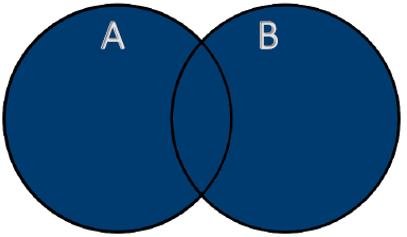
sSQL = "
SELECT S.StudentID, S.SName, S.ClassID,
M.StudentID, M.Marks
FROM [tblStudent$] AS S
FULL JOIN [tblMarks$] AS M
ON S.StudentID = M.StudentID
ORDER BY S.StudentID
"